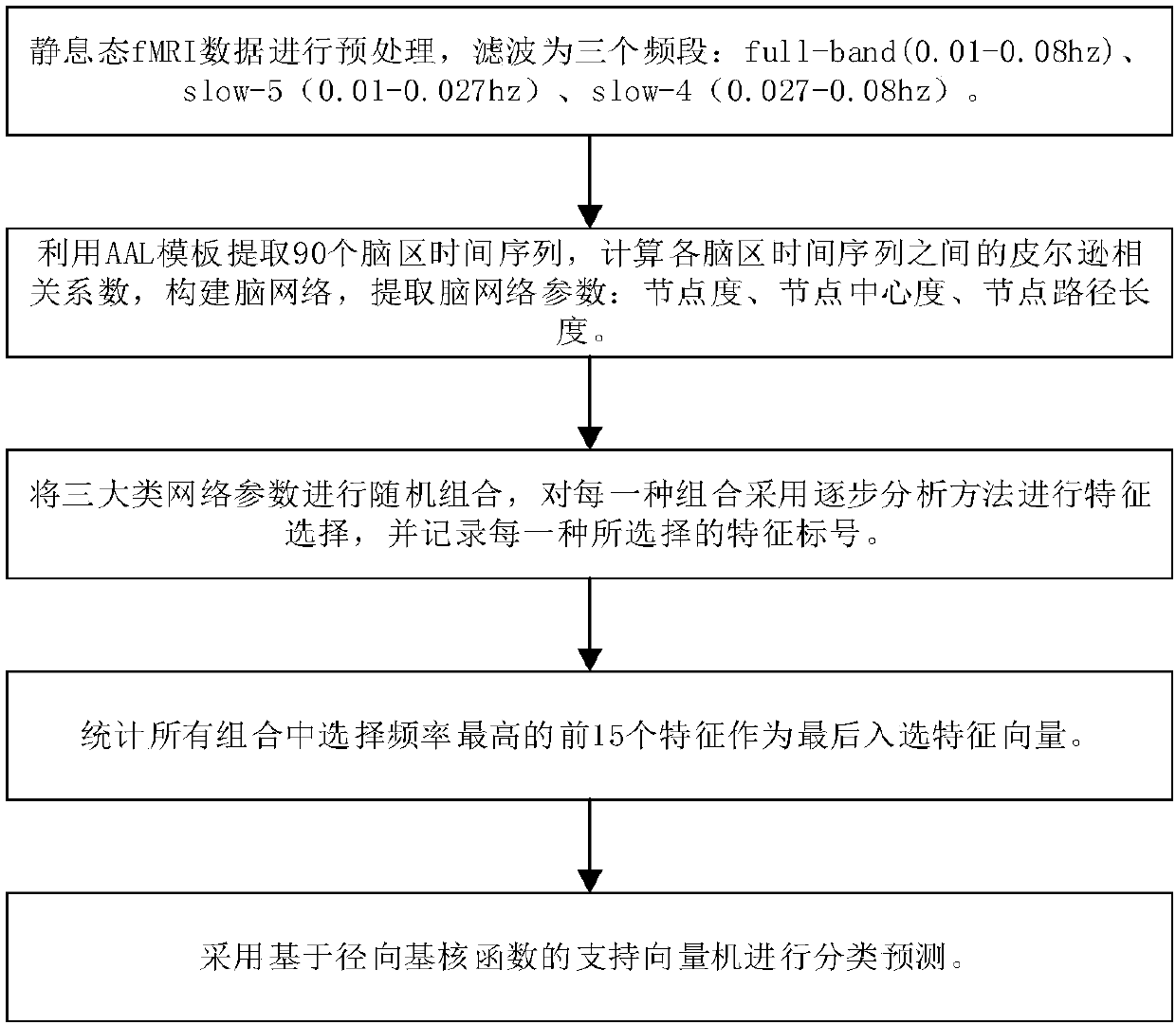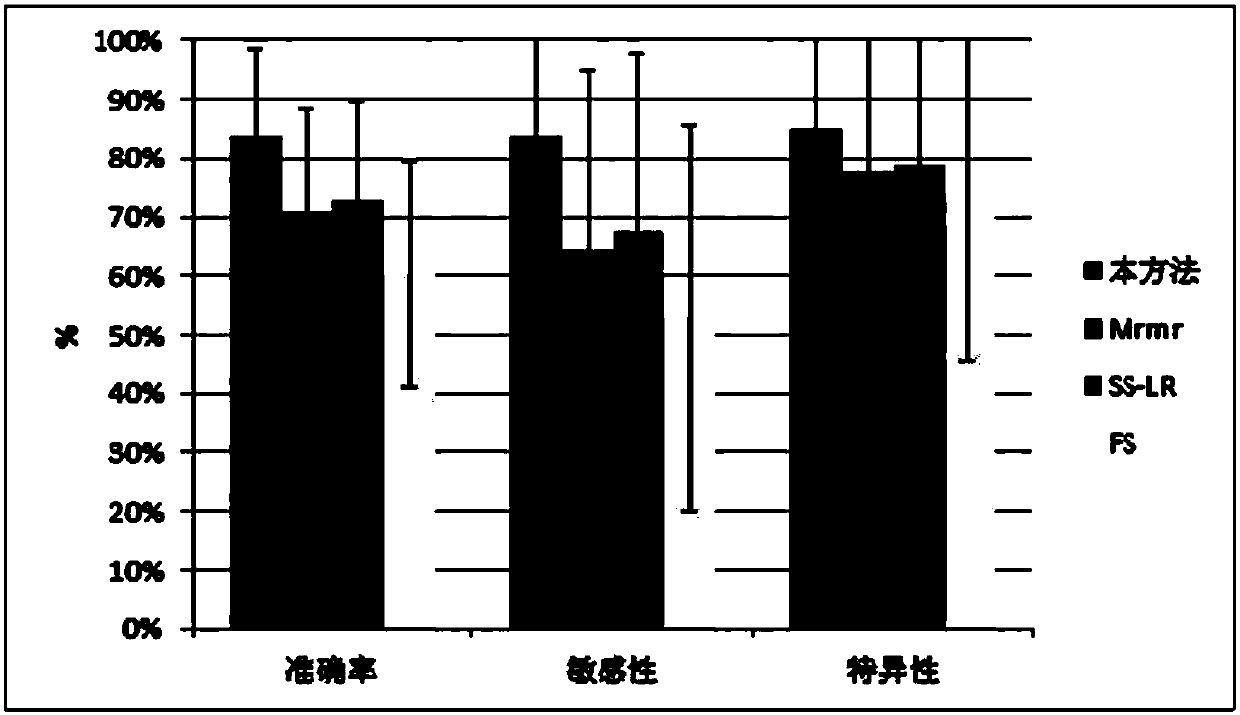Early and late mild cognitive impairment classification method and device based on brain function network characteristics
A mild cognitive impairment, brain function network technology, applied in the field of medical imaging image processing, can solve problems such as less classification prediction
- Summary
- Abstract
- Description
- Claims
- Application Information
AI Technical Summary
Problems solved by technology
Method used
Image
Examples
Embodiment Construction
[0050] In order to make the purpose, technical solution and advantages of the present invention clearer, the present invention will be further described in detail below in conjunction with the implementation methods and accompanying drawings.
[0051] see figure 1 , the specific steps of the classification method of early and late mild cognitive impairment based on brain function network characteristics of the present invention are as follows:
[0052] Step 1: Collect data and data preprocessing:
[0053] In this specific embodiment, the MCI data in the ADNI (Alzheimer's Disease Neuroimaging Initiative) data set is used. The data collection standard is: the subjects use the ADNI sample marks as the division standard of the experimental data. The Mini-Mental State Examination (MMSE) score was between 24-30, and the Dementia Rating Scale (CDR) score was 0.5. There was memory and cognitive impairment but did not meet the criteria for dementia. According to the standard, this e...
PUM
 Login to View More
Login to View More Abstract
Description
Claims
Application Information
 Login to View More
Login to View More - R&D
- Intellectual Property
- Life Sciences
- Materials
- Tech Scout
- Unparalleled Data Quality
- Higher Quality Content
- 60% Fewer Hallucinations
Browse by: Latest US Patents, China's latest patents, Technical Efficacy Thesaurus, Application Domain, Technology Topic, Popular Technical Reports.
© 2025 PatSnap. All rights reserved.Legal|Privacy policy|Modern Slavery Act Transparency Statement|Sitemap|About US| Contact US: help@patsnap.com



